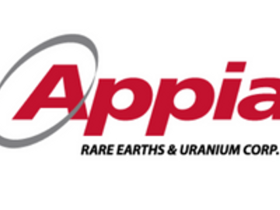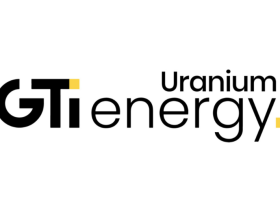Aluminum is a silvery white metal with myriad useful properties that make it a necessary component in many everyday products. For that reason, aluminum investing can offer exposure to growth in a number of market segments.
This important industrial metal is non-toxic, resistant to corrosion and has a high thermal conductivity; it’s also the most abundant metal in the Earth’s crust. Found in the minerals bauxite and cryolite, aluminum was first extracted in 1825. Often aluminum is alloyed with other metals, such as copper, magnesium, silicon, tin, zinc and manganese.
These alloys are lightweight and strong, making them desirable for use in aircraft and spacecraft applications. An alloy of boron and aluminum is used for electric power cables for transmission lines, and the metal is also used in cans, foils and utensils. Additionally, it can be deposited on the surface of glass to make mirrors. The metal is also used in the electric vehicle battery industry in the form of of lithium-nickel-cobalt-aluminum oxide batteries, also called NCA batteries.
If you’re interested in how to invest in aluminum and what the industry is all about, read on for a brief overview of the metal, from supply and demand to ways to get exposure to the sector.
Aluminum supply and demand dynamics
China is the world’s largest producer of aluminum, but supply from the Asian nation has faced restrictions in recent years — notably, the Chinese government has implemented anti-pollution policies that are dampening production activity.
But that’s not the only weight on China’s aluminum output. Over the past few years, higher energy prices have prompted Chinese smelters to slash aluminum production (an energy-intensive process) as a cost-cutting measure. Not surprisingly, the cutbacks increased aluminum prices beginning in 2021 to levels not seen in over a decade.
China’s ongoing drought has also continued to strain the nation’s hydroelectric energy generation, and in turn its energy-intensive aluminum production. At the same time, although domestic demand impacted by the economic slowdown, the Asian nation began increasing its exports of aluminum and aluminum products to Russia in 2022.
With that said, Russia, the world’s third top aluminum producer, might not need Chinese imports for much longer, considering it is finding its own production blocked from export markets. Canada has banned the import of Russian aluminium. products, and the US is imposing tariffs on Russian aluminum imports rather than an outright ban.
Looking forward, Fortune Business Insights states that the global aluminum market is set to grow by a compound annual growth rate of 6.2 percent between 2023 and 2032 to reach US$393.7 billion. The biggest driver of this growth will be housing construction globally. The packaged foods, aerospace, electrical and automobile industries also drive significant demand for aluminum.
For its part, Fact.MR estimates that the aluminum market will exceed US$287 billion by 2032. Cast aluminum alloys are now widely used in automotive and aerospace applications, the report highlights, and growing demand for electric vehicles is driving the use of aluminum-tin alloys. This segment is expected to be a major growth driver for cast aluminum alloy sales going forward.
Looking beyond electric vehicles, market researchers expect aluminum use in the general automotive industry to reach US$44 billion globally by 2032, with the Asia Pacific region leading as the largest consumer. Growth will be driven by increasing vehicle production, government emissions regulations and rising gas prices.
How to invest in aluminum stocks and more
If you’re curious about getting involved in aluminum investing, going directly through aluminum-focused companies is a straightforward way to start. Companies such as American aluminum firm Alcoa (NYSE:AA) — which produces one-fifth of the world’s aluminum — and major Norwegian aluminum producer Norsk Hydro (OTCQX:NHYDY,SWX:NHY) are both viable options.
More aluminum companies include Arconic (NYSE:ARNC), a leading producer of aluminum products for the aerospace–under its new spin-off company Howmet Aerospace (NYSE:HWM) , building and construction, industrial and packaging markets industries; and Century Aluminum (NASDAQ:CENX), which US Commerce Secretary Wilbur Ross has identified as the sole producer of aluminum used for US fighter jets.
Other heavyweight companies in the sector that investors may want to consider are Chinalco (HKEX:2600) and China Hongqiao Group (OTC Pink:CHHQF,HKEX:1378), the world’s first and second largest aluminum producers, and Rio Tinto (NYSE:RIO,LSE:RIO,ASX:RIO), which has aluminum operations in eight countries.
Further options for investing in aluminum include the WisdomTree Aluminum (LSE:ALUM) exchange-traded commodity, which is designed to give investors exposure to a total return investment in aluminum. While not exclusively focused on aluminum, the iShares US Basic Materials ETF (NYSEARCA:IYM) is an equity-based exchange-traded fund with exposure to producers in the aluminum market. There is also the Invesco DB Base Metals Fund (NYSEARCA:DBB) and the SPDR S&P Metals and Mining (NYSEARCA:XME). Finally, the London Metal Exchange offers aluminum futures contracts quoted in US currency per MT, with each contract representing 25 MT.
Securities Disclosure: I, Melissa Pistilli, hold no direct investment interest in any company mentioned in this article.





